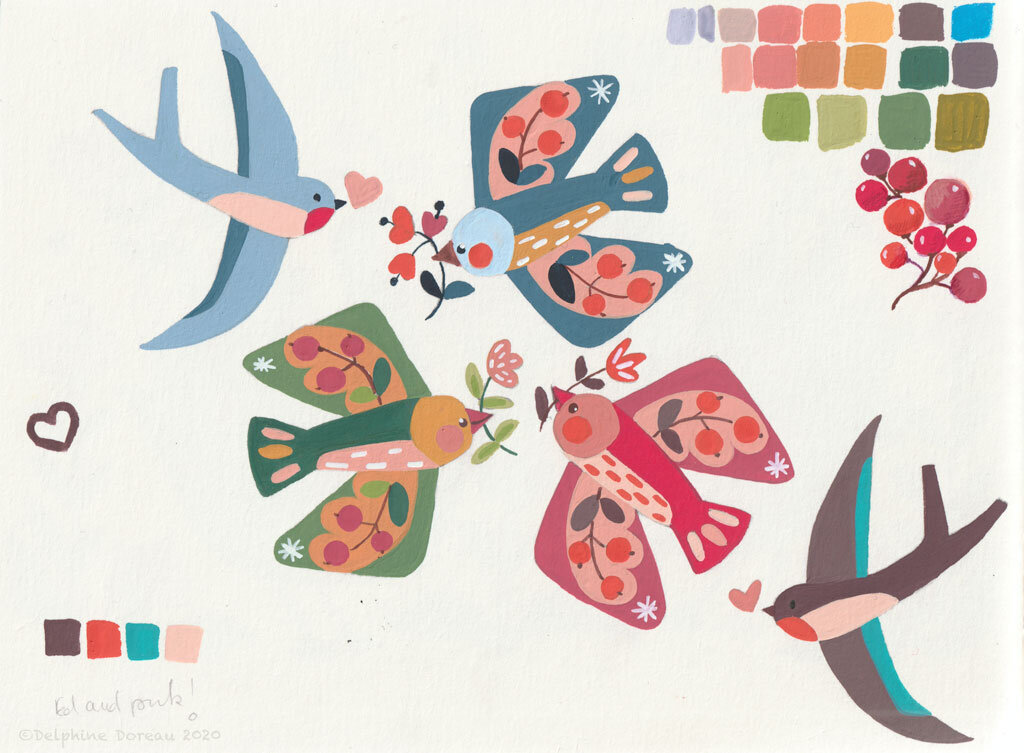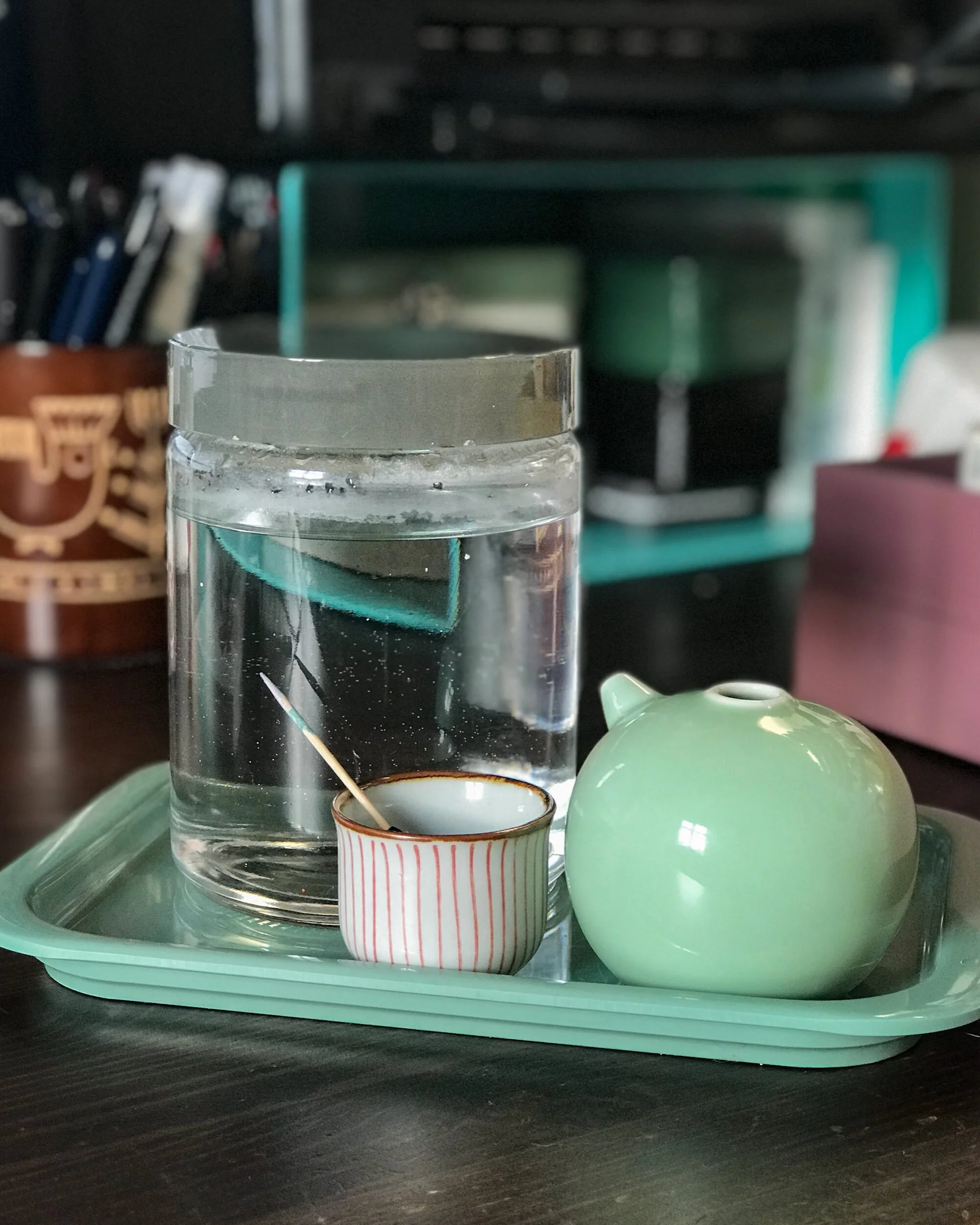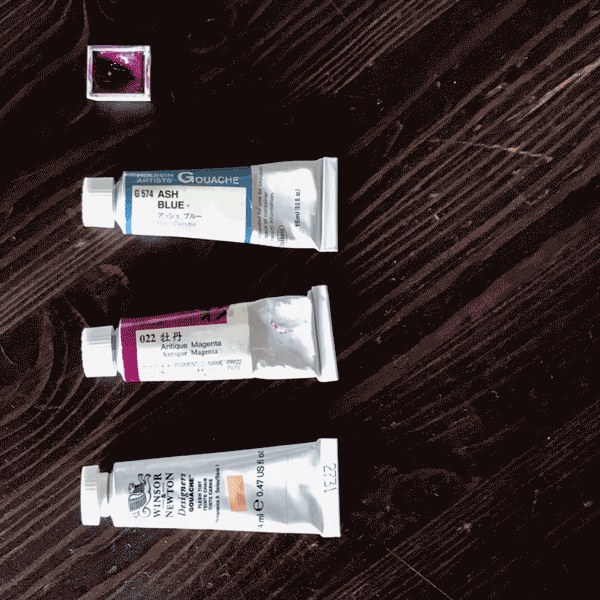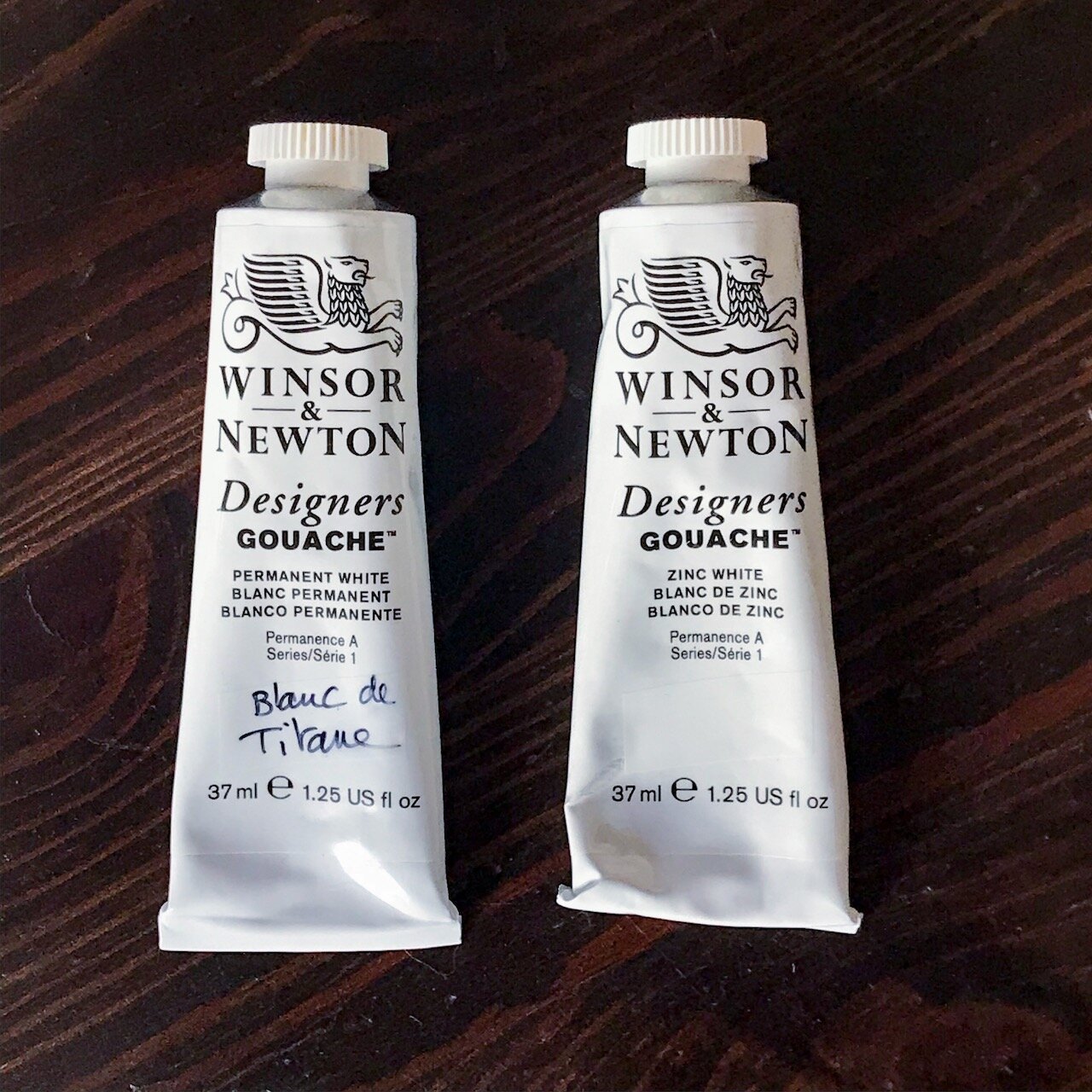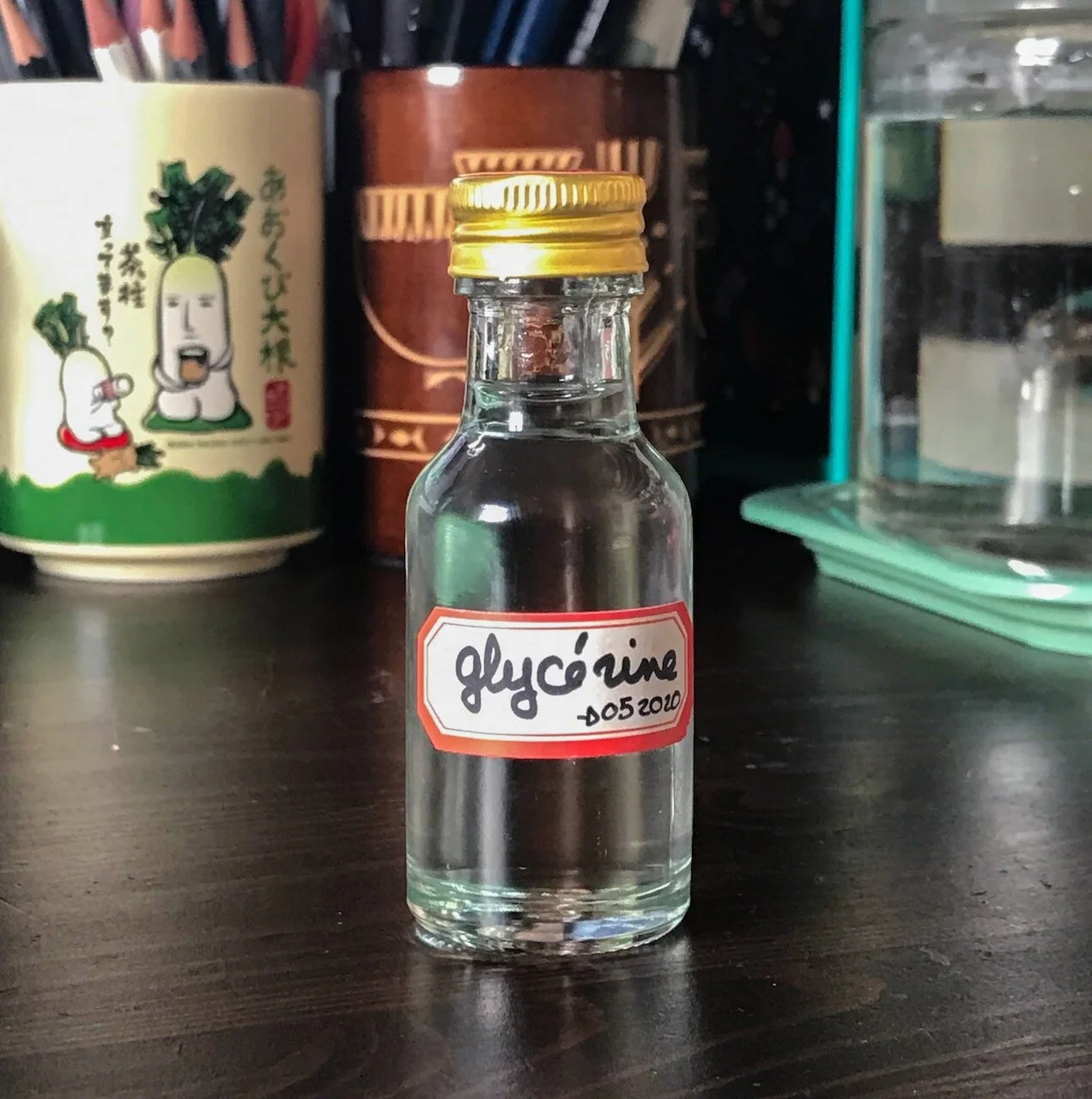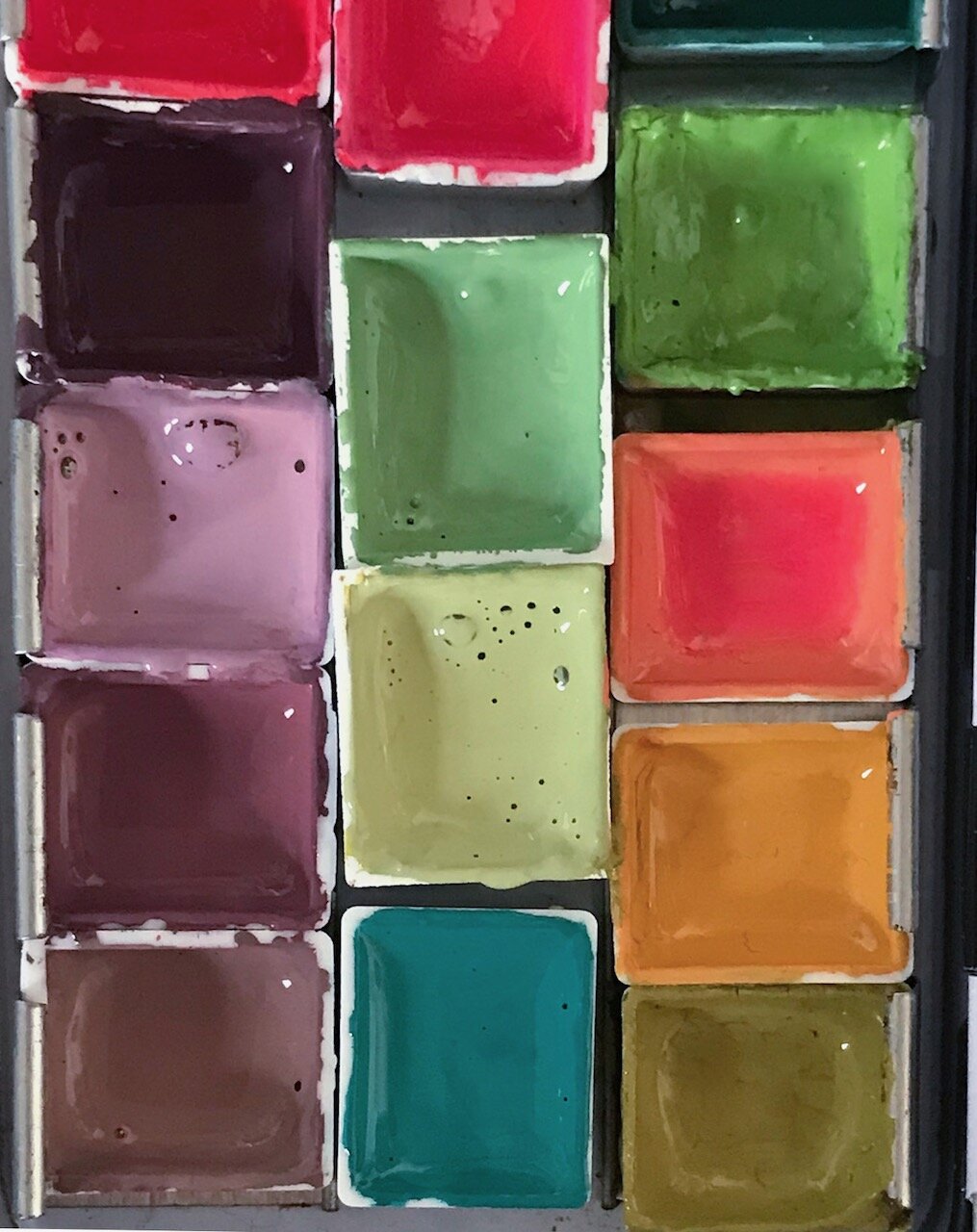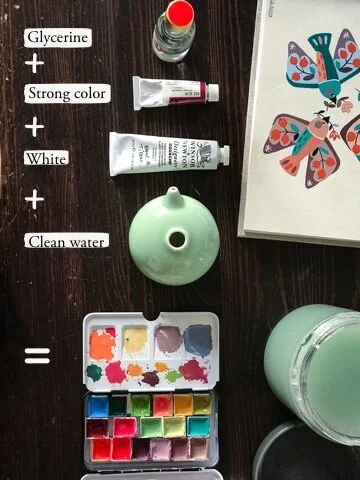Once again, gouache
© Delphine Doreau 2020
Artists and readers on Insta ( where I post my pictures these days) contacted me to ask how on earth did I managed to get such smooth and pretty colours on my gouache drawings. I was a bit surprised but then I remembered it took me a while to get some results, so maybe I should write about it.
There’s already a tutorial on how I made gouache from watercolours. This is a follow up.
A trick you should know:
First of all, it’s all about the paint’s consistency. I remember my teacher in Art School telling us that gouache should be the consistency of a “Yaourt Bulgare” to be able to paint. It’s a bit more liquid than regular yogurt, think whipping cream maybe? Almost liquid but not really. Then I also remembered that the brush shouldn’t be completely loaded, and that it’s better to dip it in a little water before picking some colour. It’s a process. If it’s too thick it will be pasty, if it’s too liquid it’ll be streaky. It’s not the easiest process. Once you get it it’s fun.
Let’s talk about the material and tools I use:
1. Water
Obviously.
I have a big pot with a lid to avoid spills, messes, and to prevent the cat from drinking it. On the right you’ll spot my lovely green dropper. You can use a medical dropper in a little pot full of clear water if you feel like it, they sell those in most pharmacies. This one is a dropper for ink calligraphy, isn't it cute?
The water in the dropper is clean and warm. It gives just the right amount of water to mix the paint with a clean brush or a toothpick. It's useful because the big pot gets dirty in seconds and will mess up your palette.
2. Paints
There's 3 ways to reach opacity : a lot of pigments, a bit of white, or a lot of fillers, like calcium carbonate.
Fillers make rewetting difficult, and crumble when dry. I do use them for Hariko inspired sculptures, but for gouache painting, artists or designers quality paints are better. I listed here the one I have. I use both watercolour and gouache paints to make my paints. Gouache is basically watercolour, but with more pigments and sometimes different vehicles.
Some pigments aren't available in gouache and that's when I switch to watercolor.
You do need a lot of pigments to reach full opacity, and watercolour contains less pigments than high quality gouache. Therefore, you will want to use watercolour paints with high staining power (magentas and phthalos for example), or the ones that will make lovely pastel colours (ultramarines make the most charming pale blues).
3.White
White doesn’t work as expected. A little will make a colour opaque, and you’ll need more than a lot to create pastel colours.
White works as much as an opacifier ( or a filler) as it works as the colour white. Yes, whites are colours. Pure white light isn’t a colour if you really want to make a point (I don’t care). Unless you want a very, very dark colour, it’s better to put at least a little white in your gouache paints. I have two whites in my palette, good quality gouache with lots pigments and very little filler. If you want to go cheap put your money on the white. Here I have Titanium white for a cold, bluish white. And then I have some lovely Zinc White, a warmer white and my favourite white to make colours that sing.
Professional quality colour gouache contains a lot more pigments than other water based medias. It makes it difficult at first to mix, the ratio of pigments to vehicle (binder, humectant,plastifier dispersant, etc) being different. Just remember you have far more colouring power than expected and you’ll do just fine.
Buy your paint colours in small tubes, they will last long. Buy big containers of whites. You’ll need a lot.
4. Glycerin
You can buy it at the baking aisle in most grocery store.
This one is a bit unexpected. Glycerin is a plasticizer used in water based paints to make rewetting more easy. I put very little in my paints : a tiny drop from the tip of a toothpick. It helps the paint to rewet nicely and smoothly. Too much of it gives a weird shine to the paint, and makes it very long to dry. Use cautiously, but do try it, as it will help you keep a palette fresh and ready to use for a few weeks. It saves time, money, and makes less waste, all good things in my book.
5. Done
Your paints should look like this.
As you can see, I make my paints in empty watercolour half pans. It’s the right amount for several illustrations, it’s easy to mix in little pans, when I’m out of a colour I just have one pan to clean ( less waste), and I put them in little watercolour tin boxes, organised in palettes, which makes choosing colours that more easy.
So, to recapitulate :
Now all you have to do is paint!
(change the water frequently)
